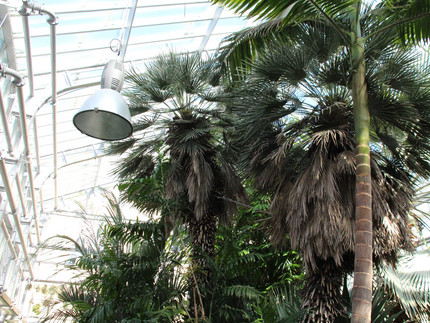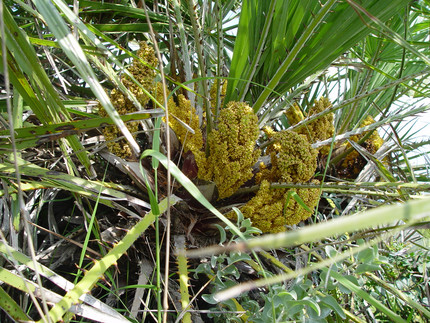Permanent exhibition
Colonial continuities – postcolonial tour through the Botanical Garden Potsdam
The Botanical Garden of the University of Potsdam was founded in 1950, that is after the end of German colonialism. The origin of its founding stock of tropical plants is not documented. Part of it originates from the horticultural facilities of Sanssouci, whose imperial greenhouses were the basis of its foundation. Numerous other plants were taken over from other botanical gardens or were bought in. Only in a few cases the origin is known. Own collecting trips to tropical countries were not carried out until a few years ago.
The tour provides insights into the colonial involvement of the botanical gardens and botany. Various stations in the greenhouses provide information about botanical collecting practices, economic exploitation of natural resources, and Eurocentric narratives, putting it in its colonial context.
Biodiversity, as a crucial basis of life, is threatened worldwide. Today, it is therefore a matter of conservation instead of appropriation, of cooperation instead of domination, and of ways to live together on this planet in a sustainable way. There is still much to be done for this coexistence. At the very beginning, there must be a transparent and responsible examination of colonial history.
The tour is the result of the master‘s thesis of Alexandra Straka with the title „Botanical gardens postcolonial - Concept for reappraising the colonial past on the example of the Botanical Garden Potsdam“ and it is meant to contribute to a critical discussion. The exhibition was proofread with a focus on postcolonial critique by Runa Hoffmann, interdisciplinary researching biologist and diversity trainer, and Demba Sanoh, historian with a focus on racism and colonialism and diversity trainer.
More information on the topic:
- "Postcolonial Potsdam" is a working group that deals with traces of German and Prussian colonial history and postcolonial silence in today's Potsdam. In their audio guide, they also talk about the Botanical Garden. Listen here: https://map.postcolonialpotsdam.org/en/places
- Schiebinger, Londa; Swan, Claudia (Hg.) (2007): Colonial botany. Science, commerce, and politics in the early modern world. University of Pennsylvania Press. First paperback edition. Philadelphia: University of Pennsylvania Press.
- Osterhammel, J., & Frisch, S. L. (2005). Colonialism: A theoretical overview (p. 410). Princeton: Markus Wiener Publishers.
- Position Paper of the Botanical Gardens Association: www.verband-botanischer-gaerten.de/userfiles/documents/Nachrichten_des_Verbandes/Kolonialismus_und_Botanische_Gaerten_-_Positionspapier_VBG_2023.pdf


